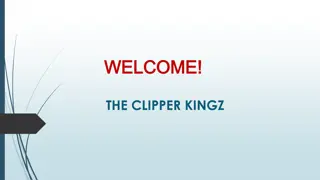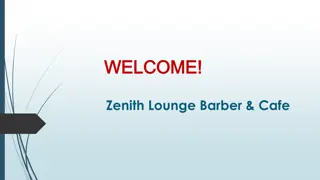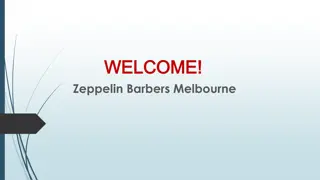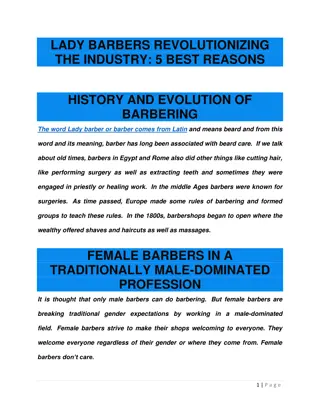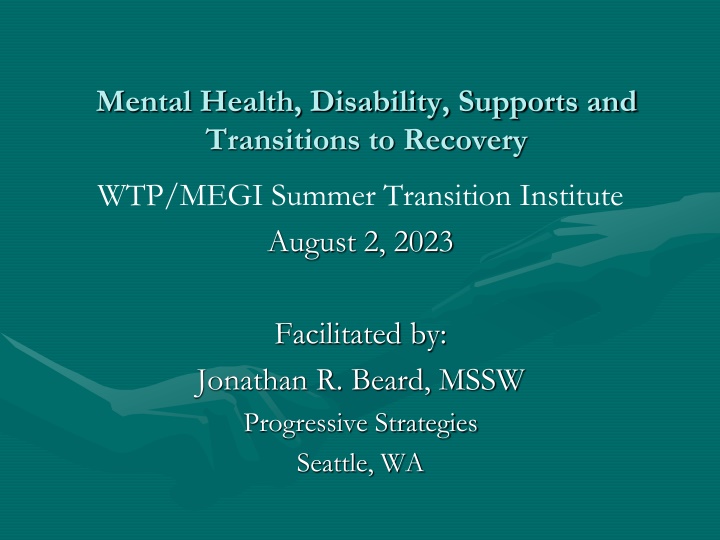
Mental Health, Disability, and Recovery Supports: Insights from WTP/MEGI Summer Transition Institute
Explore the characteristics of mental health disorders, psychiatric rehabilitation, and public mental health resources in WA State. Gain insights into the causes, prevalence, recovery, and social aspects of mental illness.
Download Presentation

Please find below an Image/Link to download the presentation.
The content on the website is provided AS IS for your information and personal use only. It may not be sold, licensed, or shared on other websites without obtaining consent from the author. If you encounter any issues during the download, it is possible that the publisher has removed the file from their server.
You are allowed to download the files provided on this website for personal or commercial use, subject to the condition that they are used lawfully. All files are the property of their respective owners.
The content on the website is provided AS IS for your information and personal use only. It may not be sold, licensed, or shared on other websites without obtaining consent from the author.
E N D
Presentation Transcript
Mental Health, Disability, Supports and Transitions to Recovery WTP/MEGI Summer Transition Institute August 2, 2023 Facilitated by: Jonathan R. Beard, MSSW Progressive Strategies Seattle, WA
Specific Objectives Recognize and describe the major characteristics of mental health disorders common to adults and children and their impact on functioning in role and task performance in domains such as work and school. Appreciate the skills and support approach of psychiatric rehabilitation in facilitating and enabling recovery. Become (more) familiar with public sector mental health resources in WA State, specifically the New Journeys coordinated specialty care team approach for youth experiencing a first episode of psychosis.
A Couple of Questions About Mental Illness What do you think are the causes of mental illness? How widespread do you think mental illnesses are? Once someone is diagnosed with a mental illness, how likely is it that they will have a meaningful life? How many people do you believe are able to recover from a mental illness?
What is Mental Health? 1. Optimum mental health is the fullest, most adequate response that a given individual can make in the particular circumstances in which he or she is found (Mead, 1963). 2. Mental health means psychological well being. It refers to more than the purely cerebral state of the person. It also stands for the emotional affective states, the relationships established with others and overall equilibrium in the person s socio-cultural context (Schwartz and Schwartz, 1968). 3. Criteria for mental health include the attitudes of an individual towards self; growth, development or self-actualization; integration; autonomy; perception of reality and environmental mastery (Jahoda, 1948).
What is a Mental Disorder? Mental Disorder: A clinically significant behavioral or psychological syndrome or pattern that occurs in a person and that is associated with present: distress (a painful symptom) or a disability (impairment in one or more important areas of role or task functioning) or with a significantly increased risk of suffering death, pain, disability, or an important loss of freedom.
Social Aspects of Mental Illness Widespread stigma in society. Poverty as a result of poor school performance and/or vocational disability. Dependence on families and the public system of care. Reduced access to care as families grow weary and system shrinks due to declining resources. Negative ripple effects (and huge costs) into homelessness, law enforcement, judicial systems.
Childhood Mental Illness Depending on what criteria for severity are used in diagnosing children with mental illness, anywhere from 6 to 12 percent of children have a mental illness at any given time. Many adults with severe mental illness report onset of symptoms of their illness as early as between ages 5 and 9.
Childhood Mental Illness Childhood and adolescent mental illnesses include: Anxiety Disorder Attention Deficit-Hyperactivity Disorder Bipolar Disorder Major Depression Obsessive-Compulsive Disorder Panic Disorder Pervasive Developmental Disorder (includes Autism) Schizophrenia Conduct Disorder
Childhood Mental Illness Early treatment of the major psychiatric disorders can lessen the severity of recurrence over a lifetime. Pediatricians miss 83% of children with psychiatric diagnoses. 3 million children have a mental illness diagnosis in a one-year period. 1.4 million of these children receive care in mental health organizations. Pervasive Developmental Disorders, including Autism, affect 1 to 1.5 of 1000 children. Treatment works, but only if you get it.
Common Adult Mental Disorders Depression Bipolar Disorder Schizophrenia Personality Disorders Anxiety Disorders Substance Abuse/Chemical Dependency Dual Disorders (MI and SA/CD)
Common Adult Mental Disorders: Post Traumatic Stress Disorder Classified as an Anxiety Disorder, Posttraumatic Stress Disorder (PTSD) Results from exposure to a traumatic event. Symptoms include flashbacks of the traumatic event, increased arousal, and avoidance of stimuli associated with the trauma. Onset of symptoms can be delayed for days, months, or years (e.g. B.D. in Doonesbury). Adverse Childhood Experiences (ACEs) can contribute to the onset of PTSD. Estimates are that as many as 50% of the adults served in public sector mental health settings have a history of trauma. Many never received any trauma informed treatment.
Treatment(s) of Mental Illness There are a variety of treatments available for mental illness. Medications are one option for many mental illnesses. Psychotherapy is another option and can be as effective as medications for select diagnoses. The two together generally produce the best outcomes. There are a growing number of evidence based practices that have demonstrated utility in treating mental illness and/or in the rehabilitation of the disabilities associated with it. Treatment works, but only if you get it.
Conceptualizing Serious Mental Illness Four Components: Pathology: Biological abnormalities in the nervous system that create deficiencies in attention, cognition, information processing (e.g., differences in brain chemistry such as dopamine, serotonin). Impairments: Deficits in concentration, memory and symptoms such as delusions, hallucinations, anxiety and depression. Disability: Limitations in role/task performance expected of an individual within a social environment (e.g., poor self care or poor interpersonal, problem solving or school/work skills). Handicap: Places individual at a disadvantage, often as a result of stigma and discrimination. Restricts full participation in society.
Psychiatric Disability Functional Disability cuts across all diagnostic categories. Disability is defined as impairment in at least two of the following: activities of daily living. social functioning. adaptation to or task performance in work or school settings. adaptation to or task performance in other (non-work) areas. significant reliance on psychiatric treatment, including psychotropic medications.
What is Psychiatric Rehabilitation? Mental Health Services that specifically seek to improve an individual's role (family members, students, worker) and functioning in an environment (home, school, work, community) so that they thrive and recover. The teaching of skills to improve functioning and/or provision of supports to accommodate functioning is the hallmark of the psychiatric rehabilitation approach. Examples of such services include evidence based supported employment, supported education, supported housing, and accredited clubhouses.
What is Psychiatric Rehabilitation? Psychiatric rehabilitation is a consensual, truly consumer driven services. It starts with the goal the consumer wants (a job, finish school, friends, etc.). What matters to them? The goal gets broken down into smaller, achievable parts. Both parties then get to work. Tell, show, do is the principal means of skills teaching. Describe it. Demonstrate it. Have the consumer perform the skill(s). Debrief. Repeat as/if needed. This works in many domains.
What is Psychiatric Rehabilitation? Skills teaching, alone, may not be enough to bring the desired role or task performance up to an acceptable level. In such cases, accommodations are then provided to accommodate the disability. In academic settings, Individualized Education Programs often include special or extra skills teaching as well as (reasonable) accommodations.
Economic, Medical and Social Benefits of Working or School Economic: Monthly rate for SSI in Washington is $914 (2023 figure). Annualized, this is $10,968, more than $3500 below the Federal Poverty Level of $14,580 for an individual. So, an additional disability that many people with psychiatric disabilities who are on SSI have is that they are (very) poor! This poverty severely limits community options for service recipients. Housing, recreation, mobility, diet and nutrition, to name a few, are all negatively impacted. Limited community options add to the extreme stress experienced by service recipients. Said stress can and does adversely impact symptoms and functioning in the community. More financial resources each and every month has the opposite effect. School and/or working is a means for bettering oneself economically. Outcomes are much, much better for people working or in school than going on disability income. So, addressing that first disability of poverty via the income generated via supported employment or additional schooling contributes to stability in the community and to recovery. This is consistent with helping people be more stable in the community and to contribute to recovery.
Economic, Medical and Social Benefits of Working Medical: Numerous studies are confirming that service recipients who are working or in school: Experience reduced frequency and intensity of symptoms. Have fewer hospitalizations. Have shorter hospitalizations, when they do occur. Report enhanced self esteem, greater levels of satisfaction and better quality of life. Achieve greater community integration. Obtain and sustain better functioning overall in the other domains of living, learning, working and social. So, employment/education can serve as an adjunct to clinical care in managing and reducing symptoms and preventing hospitalizations. This is an example of employment/education serving not just as an end, but as a means to an(other) end. Service recipients vowing to never return to the hospital or seeking any/all means to reduce/manage symptoms should be regularly engaged to consider employment/education.
Economic, Medical and Social Benefits of Working Social: Being in a working or academic environment provides opportunities to: meet people, develop friendships, engage in more social and recreational activities, cultivate romantic relationships, and experience love, intimacy and sex. So, again, employment and/or education can be a means to an end such as friends, recreation and romance, not just an end. Thus, supported employment/education can and should be offered to service recipients who voice complaints of feeling lonely, isolated, lacking social and recreational opportunities, lacking a romantic life, and so forth. The economic, medical and social benefits of employment and education should be consistently shared in the engagement of service recipients.
Evidence Based Supported Employment/Education Engagement: Increase interest in working/school, provides info about opportunities/benefits of working/school. Everyone can engage via the consistent sharing of the economic, medical and social benefits of working. Assessment: Gather info about work/school history, strengths, interests, and extent to which symptoms may have interfered with previous efforts. Leads to development of a vocational or career profile (more than what was gathered during other assessments). Disclosure of disability or not? Development: Develop relationships with businesses and schools, educate about the services provided, collect information about opportunities, examine potential for job carving or accommodation options. Placement: Locate jobs and schools that meet stated preferences, assist with completing applications, resumes, role-playing interviews, assistance with starting on the job or in school, etc. Attention to resources and supports needed for a good start on the job or in school. Coaching & Follow-Along Supports: Provides on site and/or off-site problem solving, including benefits counseling. All can help in supporting the service recipient in skillfully and successfully negotiating the interpersonal relationships encountered at work or school. This is one of the most important elements in jobs or school becoming sustainable.
Impact of Mental Illness on Academic Role and Task Performance Restlessness Distractibility Difficulty concentrating Fatigue due to poor sleeping and/or side effects from medication Difficulty adapting to unexpected assignments Panic Mind going blank Memory problems Flashbacks and other intrusive memories There are numbers of strategies that can be shared with the service recipient to use in the face of these challenges and many accommodations that can be provided by the academic institution. A couple of examples follow.
Examples of Best Practices in Supported Education Difficulty Strategies for Student Accommodations Restlessness, agitation, unable to sit still Distractions Come early to class to determine best place to sit Arrive at class early to be able to choose comfortable place to sit Attend class at preferred Reduced course load time of day Rest time between classes/courses Exercise before class Prearranged break during class Tape record class or use note-taker Fatigue
Examples of Best Practices in Supported Education Difficulty Strategies for Student Accommodations______ Poor Concentration Arrange to photocopy classmate s notes Organize time for homework Pre-arranged breaks in shorter sittings, even Take tests in separate if more frequent Write things down, keep distractions a list, keep a journal Relaxation exercises, deep breathing Tape record class or request note taker room to reduce Mind Goes Blank From the Higher Education Support Toolkit, Center for Psychiatric Rehabilitation, Boston University (see handout).
Recovery From Mental Disorders A process of change through which individuals improve their health and wellness, live a self- directed life, and strive to reach their full potential. SAMHSA, 2011.
Four Major Dimensions That Support Recovery Health: overcoming or managing one s disease(s) as well as living in a physically and emotionally healthy way; Home: a stable and safe place to live; Purpose: meaningful daily activities, such as a job, school, volunteerism, family caretaking, or creative endeavors, and the independence, income and resources to participate in society; and Community: relationships and social networks that provide support, friendship, love, and hope.
Principles of Recovery Person-driven; Occurs via many pathways; Is holistic; Is supported by peers; Is supported through relationships; Is culturally-based and influenced; Is supported by addressing trauma; Involves individual, family, and community strengths and responsibility; Is based on respect; and Emerges from hope.
New Journeys New Journeys began in Washington State in 2015 as a shared decision-making treatment model between coordinated specialty care centers and youth and young adults experiencing first-episode psychosis. Since then, the program has expanded to many counties across the state, with more sites being opened every year to address the needs of those requiring assistance with early intervention for psychosis. New Journeys can and does serve youth currently in secondary education settings AND those transitioning or those that have transitioned. https://www.newjourneyswashington.org/copy-of- providers-home-1
New Journeys New Journeys utilizes wrap-around services for education and employment, individual resiliency therapy (IRT) family psychotherapy, and medication management. The shared decision-making aspect of the program allows for the enrolled person and the clinicians to work together to set goals and create an action plan to achieve these goals. The program believes that it is just as important to focus on strengths and building resiliency as it is to treat the negative aspects of psychosis. The goal is that, when graduating from the program, the enrolled person is not only in the recovery phase of psychosis but is confident in their abilities to live a fulfilling life.
New Journeys Program Elements Individual Resiliency Training: Identifying strengths and resiliency factors to recover from psychosis and develop coping mechanisms for relapse. Supported Employment/Education: Identifying and achieving goals for school and work. Medication Management: Finding the right balance of medication to establish wellness. Family Education: Gaining the skills and knowledge to support their loved one through psychosis while learning their own coping mechanisms. Peer Support: Working with a Peer Specialist, who is in recovery, for additional support and resources for recovery. Case Management: Connecting with any/all other resources in the community that will aid in recovery.
New Journeys Potpourri As is the case with most public sector mental health services, New Journeys is primarily supported by Medicaid. Teams in WA can serve no more than 2 enrolled persons on private insurance at any one time. With the Affordable Care Act, eligibility for and access to Medicaid has dramatically expended. For more information, go to www.wahealthplanfinder.org. New Journeys Teams may be found in Chelan, Clark, Cowlitz, Franklin, Grays Harbor, King, Kitsap, Lewis, Mason, Pierce, Spokane, Thurston and Yakima counties. More teams are being developed. Specific locations and contact info may be found at: https://www.newjourneyswashington.org/copy-of-locations Additional information on public mental health services in WA may be found here: https://www.hca.wa.gov/health-care- services-and-supports/behavioral-health-and-recovery
Notes on Transition For those leaving secondary school, needing continuing clinical care and not involved with a New Journeys team, referral to your local community mental health center is suggested. Remember that Medicaid may be needed in order to access care there. Seek out a mental health center that offers evidence based supported employment/education. Seek out a mental health center that offers cognitive behavioral therapy, not just medication. Help family members by referring them to the National Alliance on Mental Illness for support and education (https://www.namiwa.org/).
Conclusion Review of Goals for the Day Potpourri and Leftovers Evaluation Adjourn Thank you!
Your Presenter Jonathan R. Beard, MSSW Progressive Strategies PO Box 15419 Seattle, WA 98115 206.524.3927 progressivestrategies@comcast.net www.progressivestrategies.org







